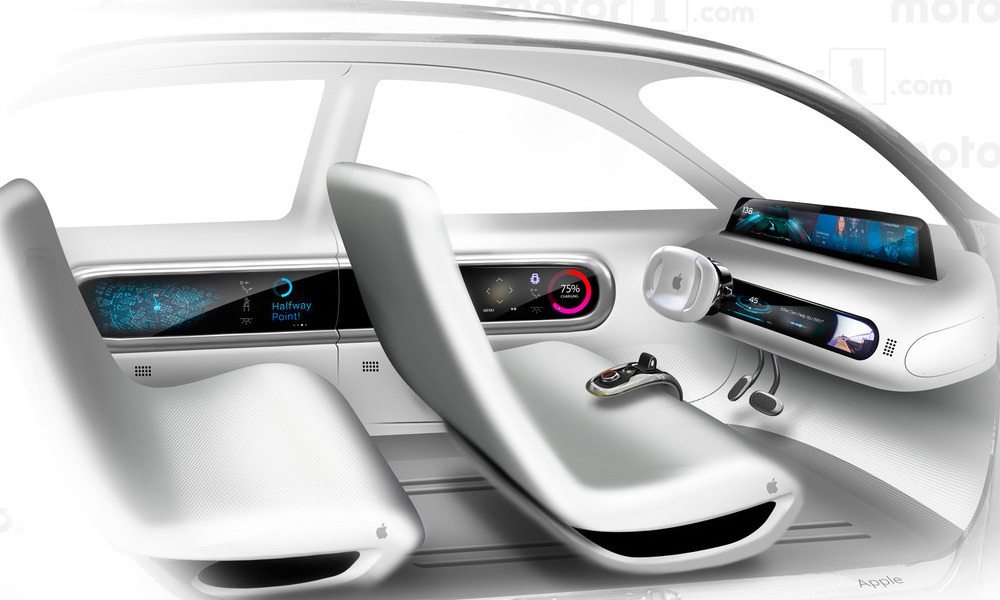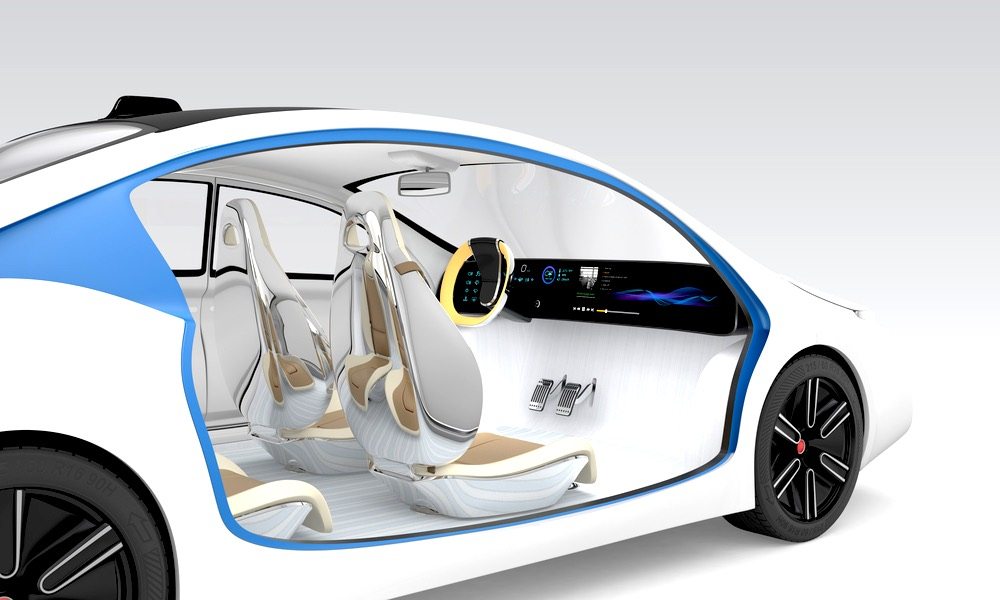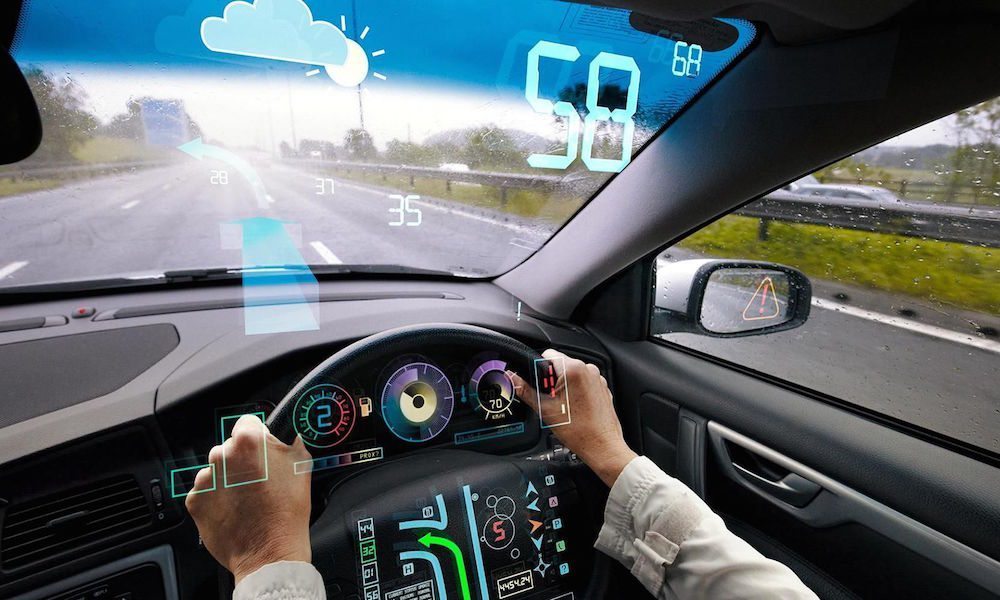3 Uses for Apple’s ‘Secret’ Autonomous Car System
 Credit: Motor 1
Credit: Motor 1
Toggle Dark Mode
Up until recently, Apple was believed to be developing its debut product for the automotive space would come to fruition as the Apple Car. As a self-driving vehicle, the Apple Car would have joined the ranks of other so-called ‘autonomous automobiles’ from the likes of Acura, for example, and would have paved the way to a revolution in how we navigate the open road.
Since initial rumors of the initiative surfaced several years ago, we’ve been led to believe a variety of scenarios concerning Apple’s self-driving car project, which has been internally dubbed ‘Project Titan’. First, it was Tim Cook, Apple’s outspoken CEO, who by a mere slip of the tongue acknowledged the existence of his company’s ambitions. Those ambitions have apparently changed over the years based on a slew of reports about internal fighting, management team shake-ups, and the company’s hiring spree of executives and engineers with experience in autonomous systems.
Interestingly, despite all the commotion surrounding the production of an Apple-branded vehicle, the last we heard about Project Titan was that the company had seemingly taken a 180 on its goal — deciding, instead of creating an actual ‘Apple Car’, to channel its vast financial and developmental capacities behind creating the underlying software that would power it. This revelation perhaps begs the question, though: If Apple’s not building an actual car, then what is the company really doing?
While the answer to this question remains the wild-card at this time, worth noting are some recent developments hinting at the company’s work on autonomous driving software, and specifically how it can be applied in accordance with a ‘one-size-fits-all’ model. Consider this quote from Apple’s CEO: “In terms of autonomous systems, what we’ve said is that we are very focused on autonomous systems from a core technology point of view,” Cook said in an interview with analysts after his company’s quarterly earnings call yesterday. “We do have a large project going and making a big investment in this from our point of view. [Autonomy] is sort of mother of all AI projects and autonomous systems can be used in a variety of ways and a vehicle is only one but there are many different areas of it and I don’t want to go any further with that – but thank you for the question.”
Though Cook’s sentiments may seem vague in relation to his mention of autonomous systems and Apple’s future in the automotive space, we’ve provided 3 possibilities as to what Apple could be working on behind-the-scenes.
3 Licensed Autonomous System

Cook recently admitted during an interview with Bloomberg that his company had shifted focus from developing an Apple-branded car, to developing the underlying software required to power them. So while we may never see a futuristic new car concept boasting a shiny Apple emblem in between the headlights, it’s essentially guaranteed that the company is developing some kind of software, which it will either license or sell as an upgrade option for future variants of existing cars — such as models from Ford, Nissan, and Toyota, for instance. As per Cook’s comments, the system could potentially be an all-inclusive solution, not just incorporating the AI-based algorithms required to power the car itself, but also other elements such as advanced navigation, in-cabin infotainment, and full connectivity with other Apple devices like the Apple Watch and iPhone. In this way, the system would provide users with an entirely new driving experience that can be custom-tailored to meet their needs while out on the road.
2 Self-Driving Cab Service

With companies like Google and Uber already working to advance their own self-driving car initiatives, it likewise seems plausible that Apple’s autonomous systems could be applied to some sort of next-generation curbside cab-service. There’s little evidence suggesting this is the company’s ultimate plan, of course, but Apple’s recent investment of $1 billion in Chinese ride-sharing firm Didi Chuxing offers a glimmer of hope that it could ultimately come to pass. The company could also work alongside other ride-sharing firms like Lyft, or even create its own, under the terms of which its software would be licensed and incorporated within a larger fleet of vehicles as an enterprise solution to serve constituents of the general public.
1 In-Vehicle Augmented Reality (AR)

Another possibility, given Cook’s omission that autonomous systems can be applied to a variety of products, is that Apple might be working to somehow incorporate its self-driving car systems with its highly-anticipated AR projects. Worth noting, of course, is the fundamental difference between automation and AR: whereas automation relies largely on machine learning and applying those learned algorithms to physically powering and guiding a product along, AR focuses on a type of technology that superimposes computer-generated images within what its user would otherwise view as ‘the real world’, which would create a sort of mixed imagery for them to interact with on a deeper level. Interestingly, Japanese car-maker, Toyota, recently patented an ‘Augmented Reality windshield’, which would essentially incorporate advanced controls and in-cabin features such as lane guidance and navigation into the windshield of a car — providing the driver with an entirely new way of interacting with the road ahead of them. While there’s no clear indication if Apple’s autonomous system will incorporate similar AR-based features, it certainly seems plausible given the bounds in technology.
[The information provided in this article has NOT been confirmed by Apple and may be speculation. Provided details may not be factual. Take all rumors, tech or otherwise, with a grain of salt.]






